How to Use Facebook for Your Email Marketing Campaign
You probably already know how important Facebook Marketing is for your business, especially when the competition is fierce and brands are scrambling to gain a foothold.
What you may not realize, however, is how combining your Facebook marketing strategy with email marketing can help you take your business to the next level!
Take a look at it this way: both Facebook and email have unique advantages.
With hyper-relevant targeting, Facebook allows you to reach out to thousands of users at once. This means you can reach out to new users who are relevant to your business and introduce them to it. Customers will learn more about your brand and be able to see how other “fans” interact with your page as a result of this.
After that, it’s time to turn these fans into paying customers, which is where email marketing comes in.
You must sell your goods and services, and email marketing enables you to do so. Conversions can be increased by creating sales pitches tailored to the company, and you can share longer content via email. It will allow the customer to learn more about your services and encourage them to buy.
In a nutshell, think of social media and email as two sides of the same coin – the most important aspects of any brand’s digital marketing strategy.
A power like that is worth talking about, and this article will show you how to use Facebook for your email marketing campaign to build customer loyalty and gain immediate sales. Let’s begin.
Why should you use Facebook for your email marketing campaign
Validating your existing customer lists is one of the most important steps you can take as a marketer. Concentrating solely on attracting new customers through various channels while neglecting to nurture existing customers can be counterproductive.
Consider Facebook as a tool for more than just reaching out to new customers. It’s a database of your current customers, with a large portion of your Facebook followers consisting of them!
It’s easier to gain a person’s email address through social media than it is to ask for their credit card information. Without investing more money on social media, you may interact and engage clients on a regular basis via Facebook and email.
Email opt-in and Facebook are used jointly by successful digital marketing organizations to promote to their users on a regular basis. It cannot be overstated, and it has the potential to offer you revenue as well as an additional stream of engagement.
Social media websites provide as trustworthy content distribution platforms for your lead generating landing pages, in addition to social adverts that allow you to tap into a network’s large and diverse user base. In exchange, you’ll be able to use your growing email list to increase your social media following. Simply create email templates with links to your social media profiles, assuming your readers don’t already follow you.
How to use Facebook for your email marketing campaign
So, how can you create an email marketing campaign that incorporates both of these elements? This is what we’ll learn in this section.
Let’s start with creating a solid Facebook ad campaign to create a landing page to attract as many subscribers as possible.
1. Set up Facebook ads

To advertise effectively on Facebook, you’ll need to become familiar with a variety of audience-targeting choices, ad types, and advertising best practices. Thanks to Facebook’s pre-configured choices, the setup procedure is easier and more streamlined than before.
Don’t worry if you don’t have a Facebook business page yet; setting one up is quite simple.
-
Below the Navigation Tabs, click the “Promote” button.
-
Create an ad campaign to generate traffic to your website - The goal here is to “increase the number of visits to your website.” In this step, enter the URL of your website.
-
Choose the format of the ad you want to show - in most cases, a single image will suffice, but you can also try videos, carousels, and other options.
Now, you need to create a stellar ad that can entice your Facebook audience. The headline, copy, call to action (CTA), and target audience are just a few of the elements you can change. Here are some pointers on how to design these ad elements.
1.1. Headline
The goal of your ad headline, as well as the main image in your Facebook advertising, is to grab your target audience’s attention while also providing them a sense of what your company can do for them. By stressing your audience’s pain points, providing specific figures, and instilling a feeling of urgency, you may achieve both aims. Because Facebook ad headlines are limited to 25 characters, consider your wording carefully.
1.2. Copy
Once you’ve captured your audience’s attention, the ad language should provide the information they need to go to the next step. Some basic guidelines include ensuring that the language fits the visual and focusing on a clear, concise value proposition.
Adopt your target audience’s preferred communication style and language in your Facebook advertising to increase the effect of the material. A warm, conversational tone is most effective in conveying your brand’s message to Facebook users.
1.3. CTA
The CTA encourages the viewer to click one last time. Facebook has made this process easier by giving pre-defined CTAs for all types of campaigns. Two CTAs that work effectively for lead generation are Sign Up and Learn More.
1.4. Target audience
The next step is to define your target audience after you’ve finalized the look of your Facebook ad. Facebook’s targeting options as an ad platform are astounding. You can create lookalike audiences based on data acquired from the Facebook pixel, your page followers, or your app users in addition to generating target audience profiles based on user demographics and interests.
You can also create a custom audience using data from other sources, such as a specific Facebook event, a linked Instagram account and offline event sets.
Your budget is the last thing you need to set up before launching your Facebook ad. Learn the ins and outs of effective Facebook ad budgeting in this article, including how to specify target revenue and create customized conversion routes.
2. Build landing pages for conversions
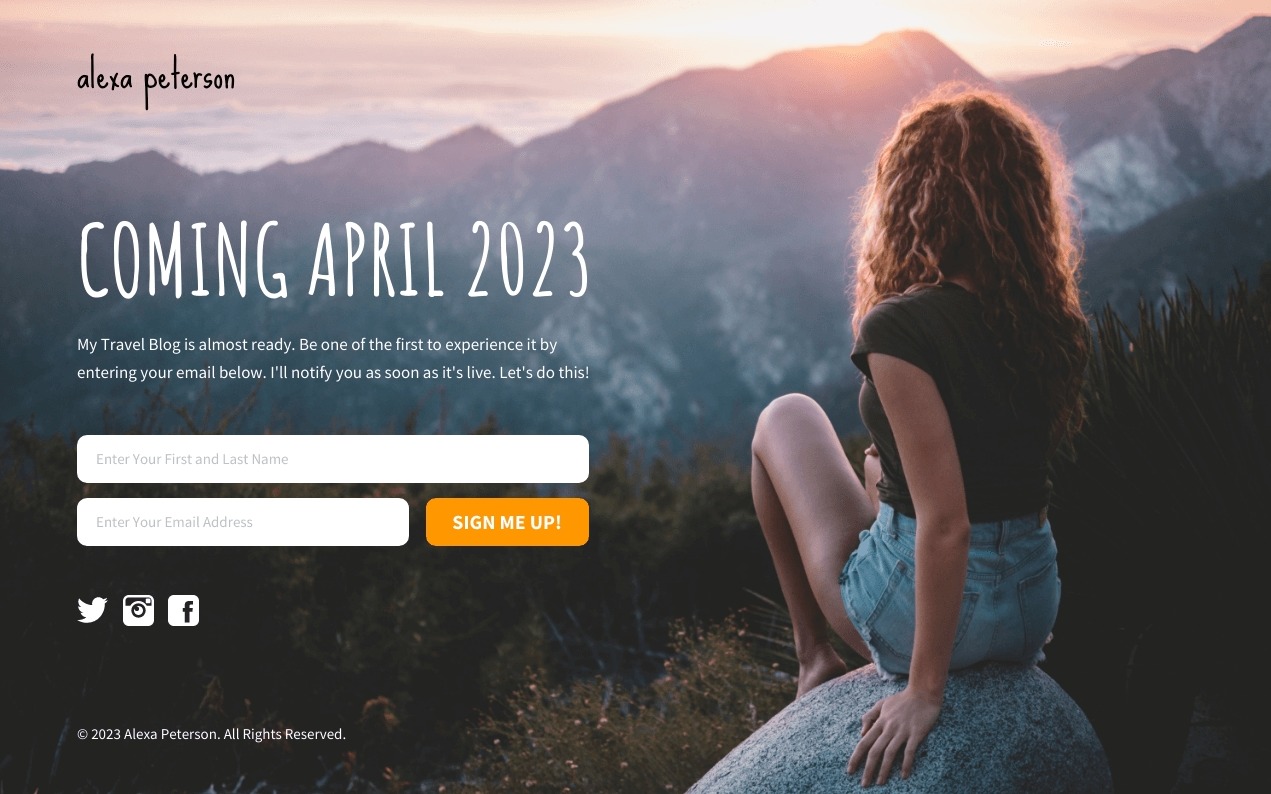
Creating Facebook ads that attract potential users is only a part of the puzzle. You must also create landing pages that push your visitors to take action and sign up as subscribers.
To ensure that your Facebook leads become subscribers, you must build your landing page in such a way that your audience is enticed to take the next step.
For every website, the age-old saying “first impression is the last impression” holds true. Your landing page is a potential customer’s initial point of contact with your company outside of Facebook. If it’s in a horrible state, you’ll miss out on a lead conversion chance and earn a bad reputation with your audience.
Here are a few tips for making landing pages that are simple to navigate and, most importantly, relevant to your target demographic.
2.1. Use visual content
Despite the fact that the web design industry has been going toward minimalism in recent years, businesses never completely avoid using a prominent graphic element on landing pages. Whether it’s an instructional video, a background image, an infographic, or a product shot, visual material is just more successful than words at attracting the audience’s attention.
A decent mix of minimalistic design and the correct amount of visuals may make your landing page ten times more appealing and interactive than your competitors’.
Keep in mind that the visual content does not always have to stand out. It should work as long as it draws attention to the other conversion factors on your landing page.
2.2 Have a solid value proposition
Most (if not all) consumers have one inquiry when they arrive at your landing page: what’s in it for me? Your responsibility is to provide them a clear, firm response as soon as feasible. As a result, your main headline should emphasize a user-oriented value proposition that is focused on the demands of your target audience.
Here are a few examples of how to design appealing value proposition messaging that can turn a potential lead into a paying customer:
-
Cite actual figures. Mentioning specific data to back up your statements is one technique to spark your target audience’s interest. Try expanding the phrase “tips to generate traffic” to “tips to generate over 10,000 visits in a month” instead of “tips to create traffic.”
-
Negative superlatives should be used. In headlines, negative superlatives such as “worst,” “never,” or “lowest” can greatly increase click-throughs.
-
Use top phrases: I can’t emphasize the importance of headlines enough, and as an eCommerce company, I know you’ll agree. You should think about crafting eye-catching headlines that will draw a lot of people down the sales funnel. Phrases like “this is why”, “will make you”, and “running out soon” can garner more engagement on Facebook.
2.3. Remove distractions
Any business landing page should aim for a simple sign-up process that leads to a higher conversion rate.
While landing pages are designed to collect information from leads, any distraction can disrupt this engagement and cause them to lose interest.
The goal is to build a page that is free of all extraneous distracting elements like sidebars, pop-ups, animations, and extensive forms that can detract from a user’s experience.
For the best results, use only one line to explain your value proposition and then directly let leads subscribe or sign up by entering their email address only.
2.4. Optimize for mobile users
Remember that you’re creating landing pages for people who click on your Facebook advertising. Because 75 percent of Facebook users reach the platform via mobile devices, it’s critical to optimize your landing pages for mobile displays, according to Statista.
The good news is that most landing page builders, content management systems, and website platforms come pre-configured to enable responsive design. That isn’t to say you shouldn’t make an attempt to optimize your site for smartphones. The Google Mobile-Friendly Test is a wonderful place to start. Simply enter your landing page’s URL, wait for the review to finish, then look for optimization recommendations.
2.5. Test your landing page
Even with an experienced team on your side, getting a landing page properly the first time is nearly impossible. Even if you employ the tried-and-true landing page strategies listed above, selecting the optimum design and structure for your website will require some trial and error.
An A/B or split testing tool can cut the time it takes to collect enough data about your landing page’s success in half. It works by allowing you to test two or more landing page versions at the same time.
A/B testing is embedded into most landing page builders, but you can also test two or more versions of a web page using external platforms like the free Google Optimize tool.
2.6. Verify new subscribers
Now that your landing pages are in fine working order, you’ll want to double-check that all of the new email addresses you’ve collected are valid.
Connecting your Facebook account to an email verification API and validating every new subscriber’s address on the spot is the ideal way to do this.
The API detects and filters spam emails in real time, ensuring that you build your list correctly and retain a positive sender reputation.
The way Internet and email service providers view you is largely determined by the quality of your email list. Improve your chances of arriving in people’s inboxes by validating your contacts.
Once you’ve used all these tips, your landing page should be a fine source for new subscribers combined with your Facebook ads.
3. Make the Facebook cover including your email address
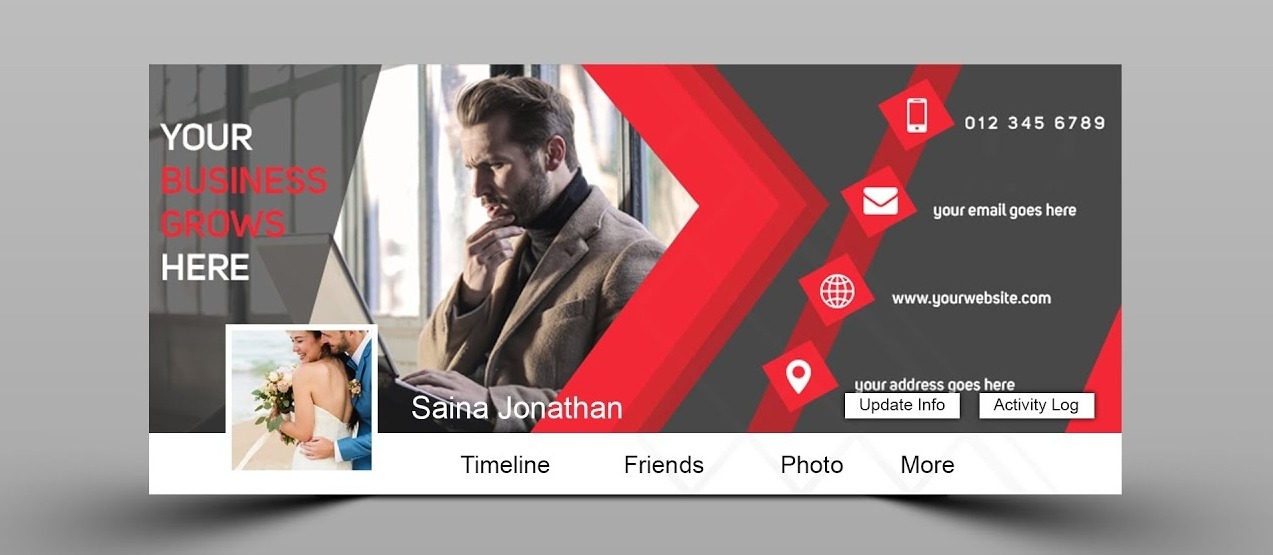
Your Facebook page’s cover photo is right at the top of your social media page and will often be the first thing visitors see. You can take advantage of this space and create an image that showcases your email newsletter.
Stay creative with your Facebook cover photo, but make sure to add some texts so your fans know that they can stay in touch through email as well. If you are hosting a giveaway on the website that requires signing up by email, you can create a Facebook cover photo for such an event and leave the link to the landing page in the caption.
4. Run a contest on the Facebook page

Speaking of giveaways, you can run a Facebook contest to encourage Facebook fans to give their email addresses.
Begin by selecting a product, service, or opportunity that you can give away, such as a coupon, gift basket, or free ticket to your upcoming event.
Then make it simple for your fans to participate. You can just collect names and email addresses and pick a winner at random, or you can ask your supporters to submit an entry that is related to your company.
A pet store, for example, may hold a photo contest and solicit entries for the “cutest kitties.” By sharing the images and allowing followers to vote, you may even enlist the support of your audience in determining the winner.
The picture above is one of the many Facebook contests from Door County Coffee & Tea for their followers to win a $50 prize value. You can upgrade it by having auto messages to the contestants to collect email addresses.
If your business can’t afford products to give away, think about what type of exclusive content that you can offer instead. Anything from a link to top-secret recipe to a downloadable guide on cloud drive can be just the incentive your followers need to give you their contact information.
5. Use the button on your Facebook page
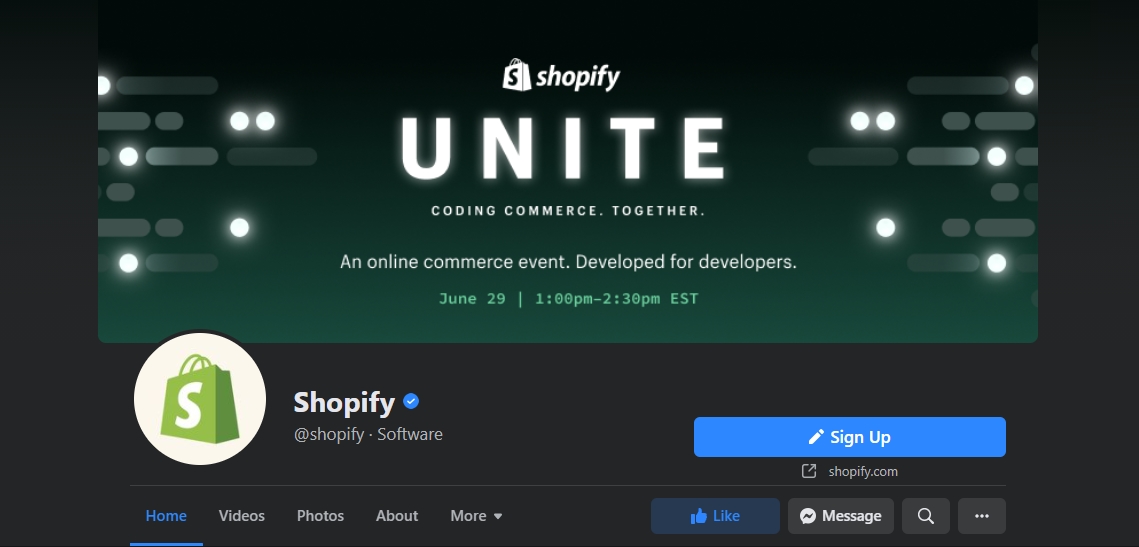
Another wonderful option to drive email sign-ups is to use Facebook’s call-to-action button, which shows above the “Like” and “message” buttons beneath your cover photo.
Simply select the “Sign Up” option from Facebook’s “Add a Button” call to action button. Then, on your lead generation landing page, provide the link so that your Facebook visitors can quickly join your mailing list.
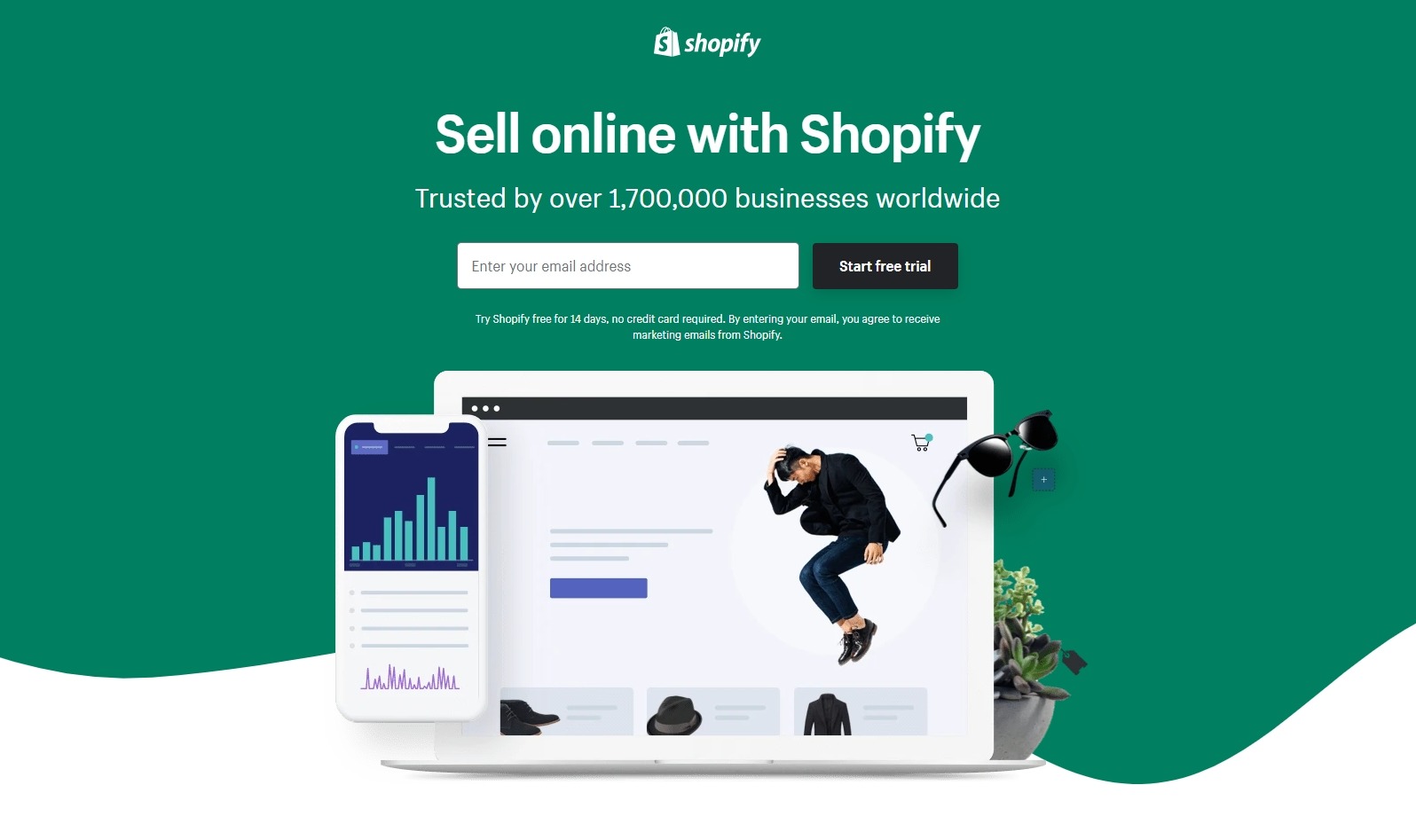
When you click on the “Sign up” button on the Shopify facebook page, you will be taken to a landing page where you only have to enter your email address to continue creating your Shopify account.
The landing page also encourages people to sign up for a 14-day free trial and lets visitors know that they will become subscribers after entering email addresses too.
6. Host a Facebook event
An event is a terrific way to engage with your audience, whether you hold one at your business or offer an online webinar. During the signup process, make sure you capture email addresses from attendances to grow your email list.
During the pandemic, many businesses have found Zoom meetings to be a great chance to interact with their customers. Or you can host a live Facebook streaming to promote your social account at the same time. It depends on your approach to interact with a large number of customers or only a few.
7. Use text to join
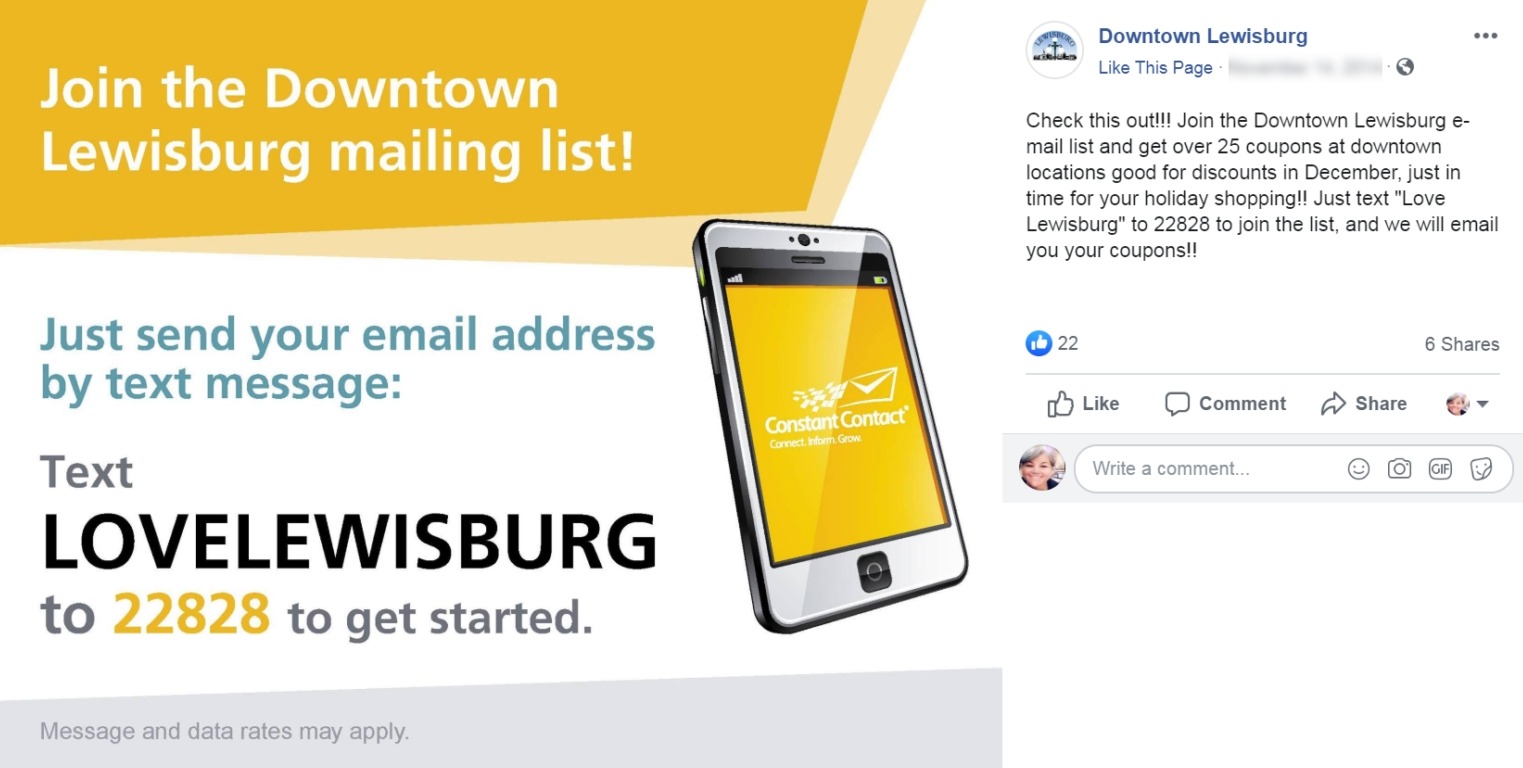
A substantial chunk of your Facebook audience will be using a mobile device to reach your page. Send a brief text to let them know how they can join your list while they’re already on their phones.
In just two days, Lewisburg’s Downtown Partnership received over 100 new email sign-ups through the tactic in the image above.
AVADA Marketing Automation lets you receive text messages from the audience and turn them into accounts to manage through keywords just like that. To make sure customers send their email address, you can make them text some thing like: “SIGN UP [email protected]”
8. Nurture subscribers and followers

If you’ve done all the tips above, you will start seeing many subscribers from your Facebook and landing pages. That is fantastic, but you still need to do more to win the trust of your leads and eventually convert them into paying customers. When they become that, they will not only be happy to receive your emails but also follow all your posts on Facebook.
To do that, you need to use the power of email marketing - starting by creating a welcome email. This is an easy step, especially if you are using AVADA Marketing Automation, you already have what you need to build and schedule a fantastic welcome email.
A welcome email not only shows your enthusiasm for new subscribers, but it also sets their expectations for future emails and makes them more open to them. Include an unsubscribe link in your welcome email, even if it seems counterproductive. It will assist you in filtering out unqualified leads as soon as possible, allowing you to precisely track the growth of your email list in terms of high-quality leads.
Next, many businesses overlook the fact that Facebook users are frequently in the Awareness or Consideration stages of the sales funnel.
You should customize your emails to the stage your audience is in to avoid losing their interest in your brand.
-
Awareness - If your audience is at this stage, it’s likely that they’re still learning to know your brand. You may provide customers with numerous tools to learn more about your business by providing them with more information about your brand in the form of blog posts, instructional content, and case studies.
-
Consideration - Leads who are in the consideration stage of a conversion funnel aren’t ready to buy just yet. They’ll need additional proof from product reviews, tutorials, free trials, and other product-focused information before they’ll be ready to take the next step.
-
Purchase and repurchase - You can segment all existing customers into one list in email marketing, regardless of whether they are making their initial purchase. Your goal at this phase is to increase brand loyalty through cross-selling emails, review requests, and special event offers.
Remember that this is a continuous process, and you’ll need to constantly adjust your emails based on where your Facebook audience is in the funnel.
Wrap up
These are some effective ways to integrate your Facebook for email marketing successfully. You will be able to streamline the process of collecting leads via Facebook through these tips.
Having successful email campaigns is a great feeling, provided you have the right tool. With all the effort in Facebook, investing in a reliable email marketing software is what gives you the bang for the buck.
AVADA Marketing Automation is a rising star in the email marketing field with competitive pricing and reliable automation. Give the app a try and you will achieve efficient results at a relatively low cost. Good luck!
New Posts

How To Set Up Google Analytics 4 For Your BigCommerce Store






